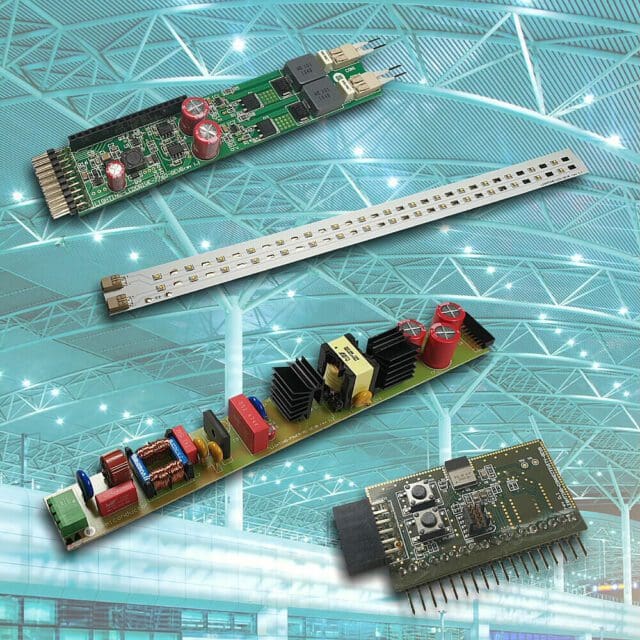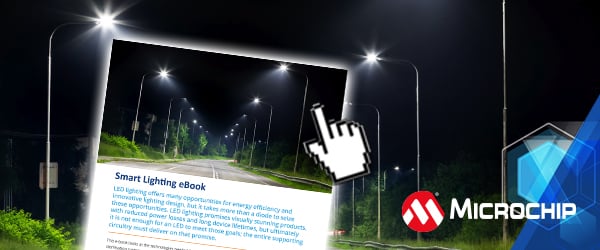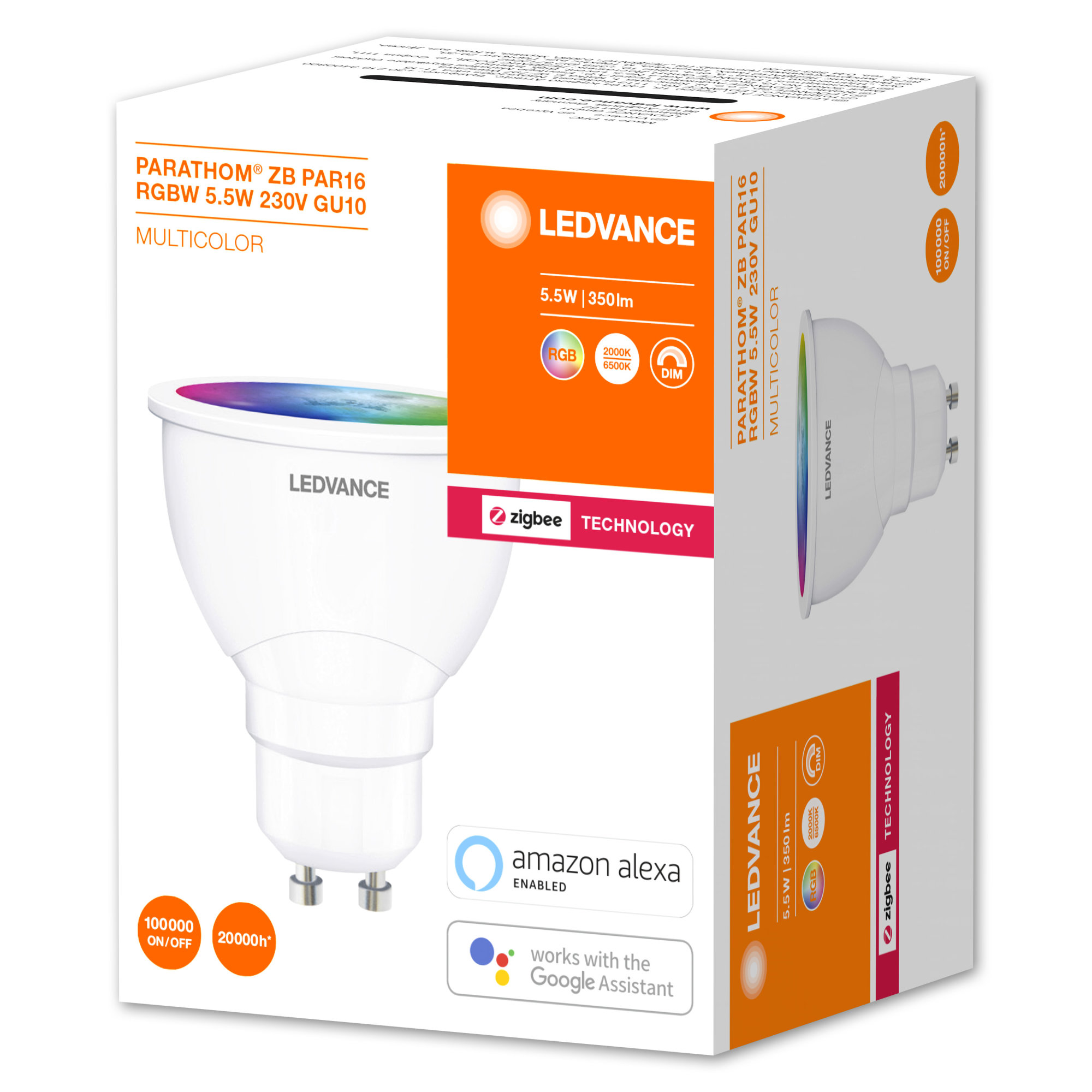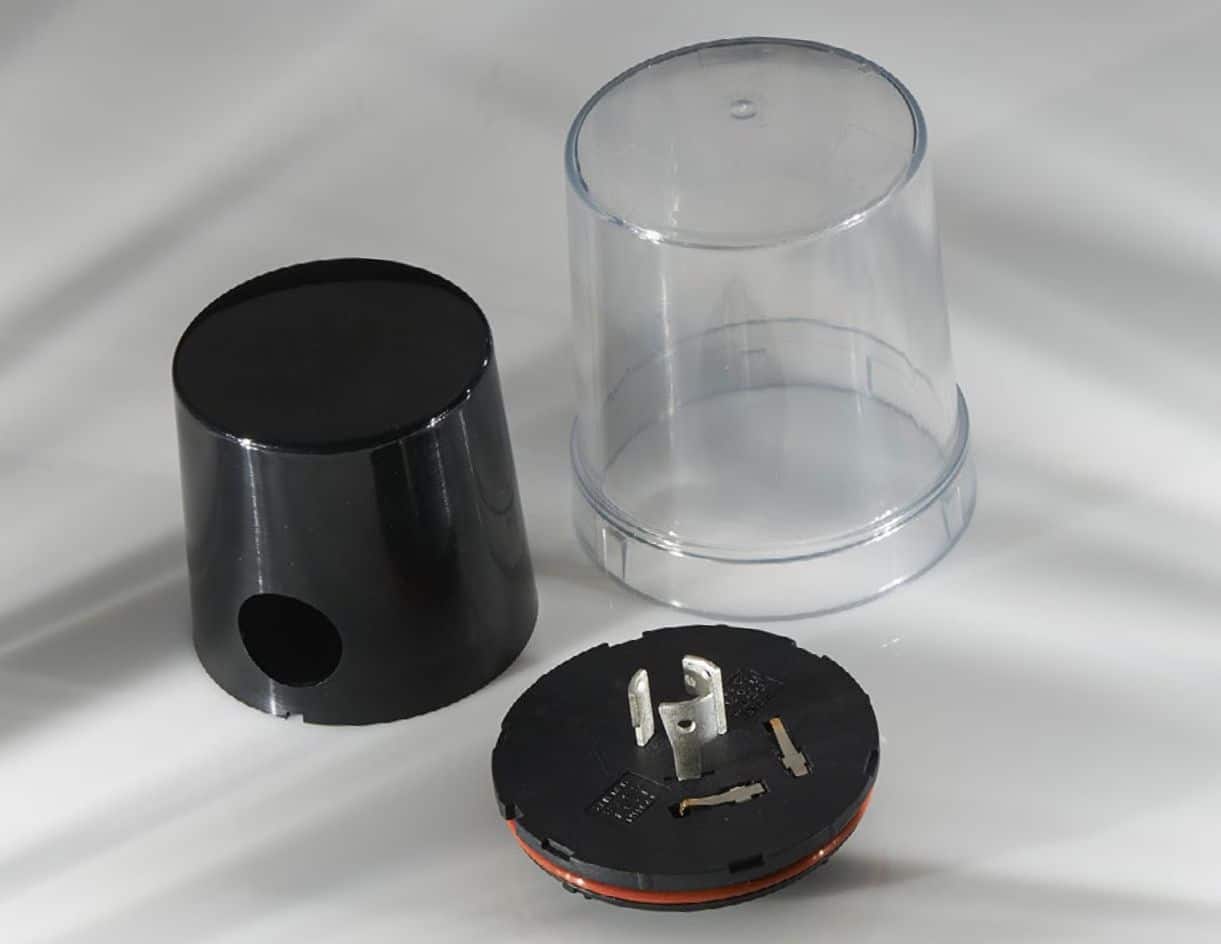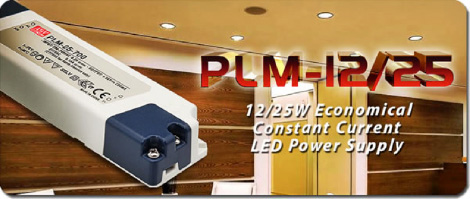Lighting is one of the largest energy consumers in the world. As costs and concern for the environment increase, it becomes more important to find ways to apply technology and innovation to optimize the efficiency and functionality of lighting and to reduce its consumption.
This demand for better efficiency and more features is met by smart, connected lighting control. The market for intelligent lighting control in residential applications is four times larger in volume than in industrial applications. Both jointly represent the fastest growing segment in the Internet of Things (IoT). In general, residential lighting systems tend to be much simpler than their industrial counterparts, with a shorter bill of materials and lower cost.
At its simplest, connected lighting may be as little as the ability to turn lights on and off, perhaps remotely or at pre-programmed times of the day. Going a step further, connected lighting systems can add features such as control of dimming and LED colours.
There is a huge range of options available, especially if sensors are added. For example: to control lighting in response to ambient light level or if people are detected in a room. In industrial applications, temperature, humidity and lighting sensors can be very valuable as their data can be used to control lights and help maintain the system.
The ubiquity of smartphones means that lighting systems can offer a sophisticated user interface on a mobile device without the cost of a special screen or complicated buttons.
full interconnection
One of the most important aspects of a smart lighting system is of course how everything communicates, as well as the connectivity technology used. Among the connectivity requirements are the commissioning of the system, the links between the devices used and the communication between the building management system and the controlled lighting.
The first decision is to choose between a wired or wireless connection. For battery-powered lights, wireless connection offers the important advantage of not requiring the installation of wiring, and this can lead to significant cost savings. Among the most widely used wireless protocols for lighting are Bluetooth® Low Energy and Zigbee Green Power™, while NFC (Near Field Communications) can be used for configuration and commissioning.
When it comes to lights powered by the mains, a wireless connection can also be a good option since it avoids the need to install a second data cable next to the power wiring. Another alternative is PoE (Power over Ethernet) since it offers the possibility of taking advantage of a single cable for power and connectivity.
PoE for lighting systems
The PoE 2 (802.3bt) standard can supply up to 90W, more than enough for an LED-based light thanks to its low consumption compared to traditional incandescent bulbs.
A practical example is a 60W connected lighting solution powered via its Ethernet cable using an integrated IEEE 802.3bt compliant controller. This solution, capable of powering two LED strips, has two LED channels that incorporate the controller buck ON Semiconductor's FL7760 constant-current current sensing high side.
With this configuration of the PWM signal the dimming can be controlled between 0% and 100% for a PWM frequency of 1,3 MHz. Brightness control is done by means of the RSL10 Bluetooth Low Energy controller which is suitable for applications RF energy harnessing (energy-harvesting). The supply voltage for the RSL10 is supplied by a single low voltage LDO regulator.
This solution achieves efficiencies greater than 90%, thus ensuring that almost all of the energy derived from the PoE controller is converted to light and can deliver up to 6000 lumens. This performance is in line with the prevailing need to minimize energy consumption and provide connected lighting solutions.
Mesh networks with Bluetooth Low Energy
Instead of establishing direct communications between two points, wireless mesh technology is ideal for industrial lighting applications since it allows a large number of devices to be interconnected, among themselves and with the outside world. Bluetooth Low Energy now has the ability to establish a mesh network of up to 32.000 devices with built-in security as standard, greatly simplifying the deployment of lighting solutions with greater coverage.
Figure 1: Bluetooth Low Energy mesh devices can have different roles for the mesh environment. (Source: Bluetooth SIG)
Within the mesh, each node can act as a light and incorporate one or more functions, which are crucial to the functionality of the mesh environment as a whole. The repeater nodes can retransmit the received messages and therefore extend the network practically to infinity if necessary. Intermediate nodes communicate with others that are not Bluetooth Low Energy or do not support Bluetooth Low Energy and add them to the mesh, while "friend" nodes store messages for other nodes that operate in low power mode. Low power nodes periodically poll friendly nodes for messages, thus saving more power.
Security is of the utmost importance in any connected system, and Bluetooth Low Energy mesh networks are no exception. All messages are encrypted and authenticated, and masking makes messages difficult to trace, thus protecting them against replay attacks. Within the Bluetooth Low Energy protocol there is a process to exchange security keys and another secure process when adding nodes to the mesh. When nodes are removed from a Bluetooth Low Energy network, it is also done securely to prevent trashcan attacks.
An alternative to Bluetooth Low Energy mesh networks is Zigbee Green Power, which has been around for a longer time. The Zigbee protocol, which is based on top of the MAC and PHY layers of IEEE 802.15.4, is used in lighting products such as those from Ikea, Xiaomi, and Philips, among others. This green and energy efficient protocol is compatible with new building trends and is easy to implement, install and reconfigure in buildings.
While Bluetooth Low Energy is originally based on a mesh model and uses a smartphone for cloud connectivity, Zigbee uses Dotdot or ZCL (Zigbee Cluster Library) and requires a special gateway as very few Mobile devices, if any, are Zigbee-compatible.
| Bluetooth mesh network | Zigbee | |
| Markets | Home and building automation, lighting, meters | Home and building automation, lighting, meters |
| application layer | Native mesh model | Dotdot/ZCL (Zigbee Cluster Library) |
| Cloud connectivity | smartphone gateway | Gangway |
| Routing | Controlled flooding | full routing |
| Other functions | Beaconing, direct connectivity to the telephone | more mature |
Zigbee can use battery-free or power-harvesting technology to provide green, maintenance-free, portable light switches. As they do not require wiring, they can be placed practically anywhere and their installation is very economical.
Figure 3: Pairing a switch with energy harvesting is a quick and easy process.
Configuring a power harvesting switch using devices such as ON Semiconductor's NCS36510 can be accomplished quickly and easily. This fully integrated, low power SoC (System on Chip) offers advanced power management and an IEEE 802.15.4 compliant transceiver. This device allows you to completely design a secure wireless network with a minimum number of external components.
connected lighting platform
With the goal of making development even easier and faster, ON Semiconductor has created a modular development kit for industrial LED lighting solutions. This platform, called the Connected Lighting Platform, consists of a connectivity module based on the RSL10 SIP device (RSL10 System in Package) that offers controls such as on/off, dimming and scheduling.
The RSL10 FOTA mobile app, available on Google Play™ and the Apple app store, adds support for wireless firmware updates. The RSL10 Sense and Control app enables developers to control and monitor environmental sensors and actuators from a mobile device. The practical cases that the CMSIS package incorporates allow you to add new functions and customize the design.
The Connected Lighting Platform supports up to two LED strips. Its LED control card features two FL7760 drivers, one for each LED strip, supplying up to 70W to each. The system can achieve in total up to 70 W and 7000 lumen, and even more if a higher efficiency LED is selected (150 lumen / W for example). The range of power modules available allows the platform to be powered from an AC/DC source or via PoE.
Flexibility and control
Even in a relatively simple system, connected lighting can offer as important an advantage as reducing energy use and therefore lowering costs. This makes it a clear alternative in many industrial and residential applications. Also, as connected lighting increases its capabilities, new applications are emerging in the field of medicine and agriculture.
Both environments require an optimized control system that achieves low BOM cost and a balance between sophisticated functionality and simplicity. Using a BOM-optimized design kit like ON's Connected Lighting Platform can save developers valuable time building their LED lighting systems and reduce risk, whatever the application.


